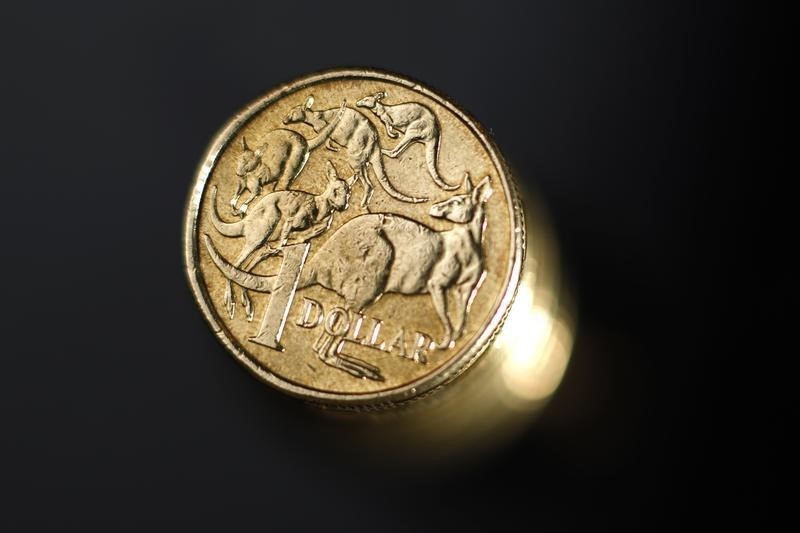By Wayne Cole and Charlotte Greenfield
SYDNEY/WELLINGTON, Sept 21 (Reuters) - The Australian dollar was heading for its best week in over a year on Friday as risk sentiment recovered from the latest round of Sino-U.S. tariffs and a major ratings agency upgraded its outlook on Australia's credit standing.
S&P Global Ratings revised its outlook to stable, from negative, removing the risk of a downgrade to Australia's triple-A rating and supporting bond prices. L3N1W71QK
The Aussie dollar AUD=D3 was at $0.7293 and holding gains for the week of 1.9 percent, the largest since July last year.
It faces a trendline from this year's peak around $0.7300 and more chart resistance in the $0.7312/18 zone. A break of that would open the way to at least $0.7381, if not $0.7450.
Short-covering was especially vicious against the safe-haven yen with the Aussie rallying 2.6 percent for the week so far to reach 82.18 yen AUDJPY= . The next target is 82.79.
Investors had spent weeks shorting the Aussie as a wager on, or hedge against, global trade tensions and turmoil in emerging markets. But the actual impact of new tariffs has been limited, at least for now.
Sentiment has also been supported by promises of economic stimulus from Beijing and reports it might cut tariffs on imports from other countries, perhaps including Australia.
"The extent of AUD resilience in the face of the latest phase of US-China trade battles has been a little surprising," said Westpac senior currency strategist Sean Callow.
"The recovery in risk assets soon after the news suggests that this phase of the trade battle was indeed priced in," he added, noting that commodity prices had also rallied.
Copper was on track for its biggest weekly gain in a month while iron ore had risen almost 6 percent so far in September.
The New Zealand dollar NZD=D4 was up at $0.6684, having climbed 2 percent so far this week - its biggest gain this year.
It got a sharp lift on Thursday when data showed New Zealand's economy grew 1 percent in the second quarter, the fastest pace in two years. a surprise result defied a gloomy business climate and should be a major relief to the Reserve Bank of New Zealand, which had been worried enough about the economy to recently flag the chance of a cut in interest rates.
The bank's next policy statement is on Sept. 27 and it is considered certain to keep rates at a record low 1.75 percent given inflation remains stubbornly subdued.
"The RBNZ is unlikely to materially alter their dovish stance... inflation has been too low for too long," said Jarrod Kerr, chief economist at Kiwi Bank.
"Persistently weak business confidence is casting a shadow on future growth, and monetary policy is forward looking in nature," he added. "Still, the Kiwi economy is running 'just right', not too hot, and far from cold."
Bond markets had a much rougher week as a steep rise in Treasury yields spilled across global debt markets.
Australian two-year yields AU2YT=RR started off the week at 2.01 percent before jumping as high as 2.164 percent, a peak not seen since late 2015. It has since eased back to 2.10 percent, but the increase for the week was still the largest so far this year.
In the futures markets, the 10-year bond contract YTCc1 sank 16 ticks in four sessions to touch a three-month low of 97.2350, before steadying on Friday at 97.2800. (Editing by Richard Borsuk)
